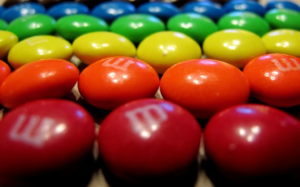 It’s a Fresh New Year! The time of year when people are thinking about getting organized. What better time for me to give you some basics for your declutter endeavors? Indeed, I am surprised I have not yet authored a blog dedicated to SPACE, an acronym that defines the how to for any organizing project. (Here is a follow up post applying this process to your to do list – magical!)
It’s a Fresh New Year! The time of year when people are thinking about getting organized. What better time for me to give you some basics for your declutter endeavors? Indeed, I am surprised I have not yet authored a blog dedicated to SPACE, an acronym that defines the how to for any organizing project. (Here is a follow up post applying this process to your to do list – magical!)
Virtually every organizing effort follows the same general process defined by the acronym S.P.A.C.E., first presented by my peer and mentor, Julie Morgenstern, in her book “Organizing From the Inside Out”. Slightly modified in my BALANCE world, it stands for Sort, Purge, Assign a space, Containerize and Energize. Whether your organizing your clothing, de-clutterng your paperwork or even putting your action items in order, this process applies.
S.P.A.C.E. is
Sort – Sort everything into categories.
Purge – Eliminate what you don’t need. Edit down to only what serves you and is active in your life.
Assign a Space – Consider priority and accessibility. If you use it often, make it more easily accessible.
Containerize – Get containers if you need them or use what you have.
Energize – See how it works and tweak. If you don’t like it, or it’s not working, make some adjustments.
A S.P.A.C.E. Example
Here is an example of how you might do this. Let’s say you decide to begin organizing your books. You may wish to start with a limited category like this, such as all shoes, or all linens; or a limited space, like a closet, or a corner of the room.
Sort – Bring together every book from everywhere in the house/office/space. Marie Kondo (Spark Joy) recommends piling them on the floor, but I would use a surface such as a table, couch or bed to honor your stuff and for safer ergonomics. If you have more than 100 books, you may want to sort them further by creating categories that make sense for you, using standards like cookbooks, reference books, fiction, non-fiction and personal ones like History/Travel Fiction, Girl Detective Novels and etc. As you sort, you can be purging.
Purge – Once you sort, you can edit your possessions and keep only what is active and serves you. Another way of choosing is to ask is “it useful, beautiful or does it bring me joy?”. Ms. Kondo suggests you decide if it “sparks joy”. In any case, if it doesn’t serve fabulous you, get rid of it. Need I mention that when I say let go or get rid of, I mean donate the item, give it to a charitable cause or friend/family member. I rarely if ever mean “landfill”! This stage is the most difficult part of the organizing process for many. Not the least reason is because it gets pretty messy before it gets better. The worst is that you have to make decisions. That can be difficult, so think of it as a muscle that just has not had much exercise in a while. It will get easier with each decision, even liberating.
Assign a Space – When you decide where to keep it in your space, consider how it’s used, how often, and accessibility. For example, you may decide to store cookbooks up on a high shelf in the kitchen – you like the way they look and don’t mind getting a stool since you don’t use them much. For reference books, you may decide to keep them in the office where you use these books the most. Ideally, if you have done a great job of letting go, you have extra space.
Containerize – Contrary to how many people get started organizing – by going shopping to get the containers – that is almost the final step! Because not until you have sorted and purged will you know what you have and the containers needed to organize it. Containers you may need for this effort include book ends, a book shelf or a shelf to install in the kitchen. Be sure to measure before you shop and bring the tape measure with you!
Energize – This is the step where you use the system, perfect it, and then modify if it is not working. You may decide that you want all the self-help category of books in the office and not in the main room since you don’t read them there. Or that keeping cookbooks up high works great but you can get rid of even more of them, keeping only the real pretty ones. Make it all work for you and your life flow.
That’s it. It’s a simple, straight-forward process though it’s not always easy. If you need help getting started, read this for ideas and motivation.